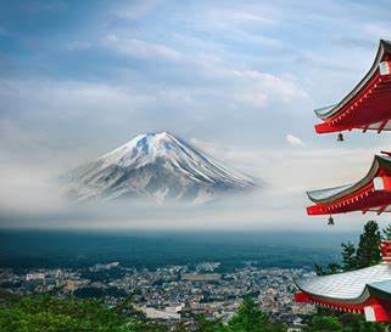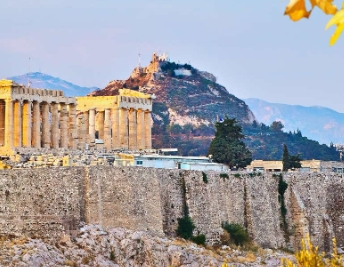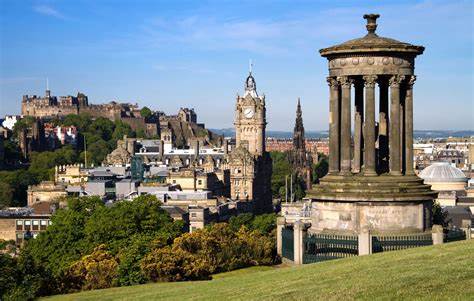Kyoto, Japan’s ancient capital, is a city where history, culture, and nature blend seamlessly. Renowned for its temples, traditional tea houses, and stunning gardens, Kyoto offers a serene escape into the heart of Japanese heritage. Unlike the bustling metropolis of Tokyo, Kyoto retains a sense of old-world charm, allowing visitors to experience the country’s rich traditions and breathtaking landscapes.
Begin your exploration at Fushimi Inari Taisha, one of Kyoto’s most iconic landmarks. Famous for its endless red torii gates, this Shinto shrine is dedicated to Inari, the god of rice and agriculture. Walking through the hundreds of vermilion gates, which lead up the mountainside, is a unique and peaceful experience, offering beautiful views of Kyoto and the surrounding countryside. The hike to the top takes about two to three hours, but the serene atmosphere and spiritual energy make it worthwhile.
Another must-see is the Kinkaku-ji (Golden Pavilion), one of Kyoto’s most famous Zen Buddhist temples. The temple is covered in gold leaf and sits beside a tranquil pond, creating a stunning reflection on the water’s surface. The meticulously maintained gardens around the temple add to the sense of peace, making it a perfect spot for contemplation and photography.
A short distance from Kinkaku-ji is Ryoan-ji, home to the famous Zen rock garden. The simple yet profound arrangement of 15 rocks on a bed of gravel is said to represent the complexity of nature, providing visitors with a moment of reflection. The surrounding gardens, with their peaceful atmosphere and carefully placed stone lanterns, make this one of Kyoto’s most serene spots.
For those interested in Kyoto’s imperial history, a visit to the Kyoto Imperial Palace is a must. Once the residence of Japan’s imperial family, the palace is surrounded by beautiful gardens and expansive grounds. You can explore the various halls and rooms, each meticulously designed in traditional Japanese style, and gain insight into the life of the imperial family during the Edo period.
One of the most enchanting areas in Kyoto is the Arashiyama Bamboo Grove. Walking through the towering bamboo stalks, which sway gently in the wind, creates a sense of otherworldliness. The grove is located near the Tenryu-ji Temple, a UNESCO World Heritage site, which features beautiful gardens and a picturesque pond. After exploring the bamboo forest, take a stroll along the Togetsukyo Bridge for stunning views of the mountains and the Hozu River.
If you’re a fan of traditional tea culture, Kyoto is the place to experience the art of matcha (green tea). The city is home to many tea houses, especially in the Gion district, where you can participate in a traditional tea ceremony. This centuries-old ritual involves the preparation and serving of matcha, allowing visitors to immerse themselves in Japanese customs and appreciate the meditative aspects of tea.
Gion, Kyoto’s famous geisha district, is another area that captures the essence of old Kyoto. Wander the narrow, lantern-lined streets, and you may catch a glimpse of a geisha or maiko (apprentice geisha) on their way to an appointment. Gion is also home to many traditional ryokan (Japanese inns), where you can experience Japanese hospitality and spend the night in a tatami room with sliding paper doors and futons.
Kyoto’s Nijo Castle is another historic gem that offers a glimpse into Japan’s feudal past. Known for its “nightingale floors”, which chirp when walked upon to warn of intruders, the castle is an architectural marvel. Inside, you’ll find beautifully decorated rooms, including the Karamon Gate and the Ninomaru Palace, showcasing the elegance and power of the Tokugawa shogunate.
No trip to Kyoto would be complete without visiting the Kiyomizu-dera Temple, a UNESCO World Heritage site. Perched on a hillside with a massive wooden stage supported by hundreds of pillars, the temple offers breathtaking views of the city and the surrounding mountains. The temple is famous for its “love stone”, which is said to grant wishes to those who can walk between two stones with their eyes closed. The surrounding streets of Higashiyama are filled with charming shops, cafes, and traditional buildings, making it a perfect spot to explore on foot.
For a truly unique experience, head to the Philosopher’s Path, a scenic walk along a canal lined with hundreds of cherry trees. This peaceful path is particularly beautiful during the spring, when the cherry blossoms are in full bloom. The walk is named after the philosopher Nishida Kitaro, who is said to have walked this path daily while contemplating his ideas. The path leads to several temples, including Ginkaku-ji (Silver Pavilion), another stunning example of Japanese Zen architecture.
Kyoto is also famous for its kaiseki dining, a multi-course meal that highlights seasonal ingredients and traditional Japanese flavors. Visit one of the city’s many ryotei (traditional restaurants) for an exquisite kaiseki meal, or try the city’s famous yudofu (tofu hot pot) in the Nanzen-ji area. Don’t miss the opportunity to try kaiseki at a traditional inn or teahouse, where the experience of dining is just as important as the food itself.
Kyoto’s beauty is not just confined to its temples and gardens but is also reflected in its people and their customs. The city is a living testament to Japan’s culture, where old traditions and modern life coexist harmoniously. Whether you’re wandering through centuries-old streets, meditating in a Zen garden, or sipping matcha in a traditional tea house, Kyoto offers an immersive experience that will stay with you long after you’ve left.
This guide introduces Kyoto as a city of tranquility, culture, and nature, offering both historical insights and opportunities for reflection. With its beautiful temples, serene gardens, and deep-rooted traditions, Kyoto is the perfect destination for anyone seeking a connection to Japan’s rich heritage.






